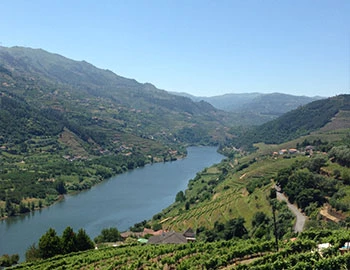Quinta de la Rosa Finest Reserve Port
DO Douro, 500 ml

| Grape variety: | Touriga Nacional, Touriga Franca, Tinta Barroca, Tinta Roriz |
| Producer: | Quinta de la Rosa |
| Origin: | Portugal / Porto |
Description
A port like a bedtime story, a glass full of nostalgia - "Saudade" is the Portuguese name for this feeling. The ruby-red cuvée shows an impressive range of aromas, of dark berries, exotic spices, a hint of pepper and mocha. On top of this floats the distinctive floral scent of star jasmine, lavender and violets. The palate is embraced with sweetness and smoothness, but it also has a slight tannic aftertaste that lends it great elegance. For a special experience serve it with a roasted saddle of venison or a venison steak.
Attributes
| Origin: | Portugal / Porto |
| Grape variety: | Touriga Nacional, Touriga Franca, Tinta Barroca, Tinta Roriz |
| Label: | Vegan |
| Ripening potential: | 2 to 3 years |
| Drinking temperature: | 16 to 18 °C |
| Food Pairing: | Blue cheese, Chocolate and chocolate dessert, Cakes, biscuits, pastries |
| Vinification: | with stalks attenuated, stamped by foot, fermentation with grapes' own yeast |
| Harvest: | hand-picking, in small boxes, strict selection |
| Maturation: | in large wooden barrel/foudre |
| Bottling: | filtration |
| Maturation duration: | 72 months |
| Volume: | 19.5 % |
| Note: | Contains sulphites |
Quinta de la Rosa
Portugal and England have engaged in wine trading since the 14th century. Over the course of time, the British also settled in Portugal, establishing agricultural estates (quintas) to grow wine, and founding large trading companies in Porto. The Bergqvist family are descendants of these settlers, still involved in production and trade on the strength of innovative ideas and great commitment.
Quinta de la Rosa is headed by Sophia Bergqvist. She is the granddaughter of Claire Feuerheerd, who received Quinta de la Rosa as a christening gift from her English grandmother. Sophia's father, Tim Bergqvist, took over the management in 1972, after Claire Feuerheerd’s death. The quinta experienced some turbulent times – the depression in the 1930s, the Second World War and difficult times in the 1960s. When the Portuguese revolution broke out, the temptation to sell was great. But Sophia's mother, Patricia, spoke out strongly against this move.
With Portugal’s entry into the European Community in 1986, both father and daughter decided to join forces to make Quinta de la Rosa one of the leading independent producers of quality port wine. Very soon afterwards, Quinta de la Rosa became one of the first to also bottle dry Douro wine. Today, not only can you find their excellent port wines in the best wine shops, hotels and restaurants all over the world, but also their extraordinary dry white and red wines. The La Rosa White Wine Reserva, for example, surprises with its mineral freshness, complexity and length, standing toe to toe with top Burgundy wine.
The Douro Valley is also a fantastic travel destination. Quinta de la Rosa offers visitors charming rooms, equipped with all the modern comforts. In summer 2017, they opened the Cozinha da Clara restaurant, which serves Portuguese dishes and recipes handed down from grandmother Claire. www.quintadelarosa.com
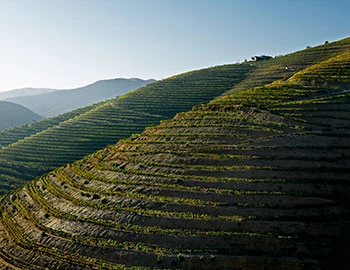
Touriga Franca
Ingredient for red wine and port.
The Touriga Franca is at home in the rugged beauty of the Portuguese Douro Valley. On the slate terraces over the river, the grapes were traditionally grown in mixed settings. Up to 80 different vine varieties shared a single parcel. Not even the vintners knew which variety they were dealing with. In the 1980s, Ramos Pinto undertook to identify the five best grape varieties for port wine production. One member of this selection was Touriga Franca. It shines with its deep red colour, intense aromas of blackberry, rose and wildflowers, its full-bodied structure and velvety tannins. Port wine was once dominant on the Douro. But for 15 years the dry red wines here have experienced an unprecedented boom. The Touriga Franca almost always plays a part. It is mostly blended with Touriga Nacional and Tinta Roriz.
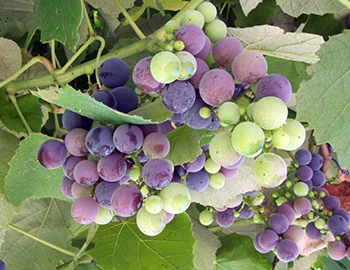
Tinta Roriz
Iberian Native
leather and spices, it gives the Rioja its face. In the Ribera del Duero, it is known as Tinta del país. Here it turns out focused and muscular. As it has inhabited the Iberian Peninsula for centuries, it is known under countless synonyms. Across the border in Portugal, it is called Tinta Roriz, and lends colour and body to port wine. It also plays an important role in the booming wine scene of the Douro Valley. The Tempranillo owes its name to its early maturity – "temprano" in Spanish means "early". Tip: do it like they do in Spain and enjoy it with lamb.
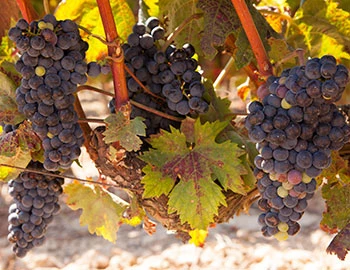
Touriga Nacional
National emblem
The Touriga Nacional originally comes from the Dão, in the heart of Portugal. There is a village there named Tourigo. But it became famous in the Douro Valley, where port wine is produced. When the five best varieties were selected from the motley assortment of grapes growing in the vine terraces in the 1980s, the Touriga Nacional was the first choice. It smells of cassis, raspberry, plum, violet and liquorice, and is concentrated on the palate with supple tannins. It does well not only in port wine, but also in dry reds. Solo, the Touriga Nacional tastes almost too intense; therefore, it is usually blended with other varieties such as Touriga Franca and Tinta Barroca. Developed in barriques, the wines show their full potential. In the past ten years, the cultivation area of this grape has more than doubled, and spread to the whole of Portugal.
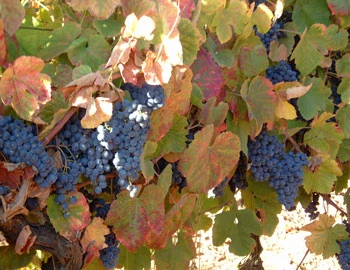
Tinta Barroca
Opulent Portuguese
It is aptly named: Tinta Barroca means “the dark baroque”. In fact, this variety yields very dark wines with good body and opulent aromas. They smell of plum, cherry and blackberry, have a lot of alcohol and low acidity. The Tinta Barroca has its home in the northern Portuguese Douro Valley. Traditionally, it has gone into port wine, but it is now also an element of the booming red wines from this area. Alone, it turns out somewhat rustically. Therefore, it is wedded with other quality varieties from the Duoro, like Touriga Nacional or Tinta Roriz.
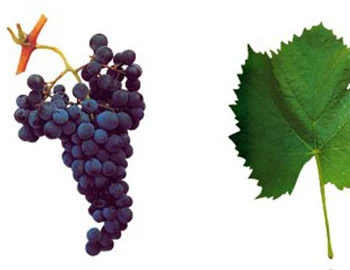
Portugal
Portugal – Much more than port
Situated on the southwestern tip of Europe, this country is, despite its small size, blessed with a multitude of landscapes. Austere mountains alternate with green valleys and golden beaches. Vines have thrived against this backdrop for over 4,000 years, brought to the peninsula by Phoenicians, Greeks, and Romans.
Portugal has over 500 autochthonous varieties. The term derives from ancient Greek, and means roughly “of the land itself.”
